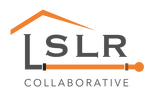On August 4, 2022, the U.S. Environmental Protection Agency released guidance on conducting a lead service line inventory for compliance with the revised Lead and Copper Rule. The Collaborative is in the process of updating its materials to reflect U.S. EPA's guidance. Stay tuned for updated materials.
Getting Started on an LSL Inventory
|
|
This section addresses resources and techniques for identifying which of the buildings in the community are likely to have lead service lines (LSLs). Lead lines were installed before 1986, although in some cases they were banned decades earlier. Since installation, some LSLs have failed and been replaced or repaired, some have been partially replaced, and still others remain in service. When preparing an inventory, it is important to understand if lead pipe is still in use both in the portion of the service line owned by the water system and the portion on private property. To provide the most benefit, the inventory should include the pipe material on both public and private property.
Knowing that LSLs were not installed after June 19, 1986, the task then becomes identifying if and when LSLs were installed prior to that date. Many, if not most, communities stopped installing LSLs much earlier than 1986. A key step in developing an LSL inventory is documenting when installations stopped locally.
|
Organizing existing data
A critical step in preparing an inventory of LSLs in a community is to find existing data. A community may also find it necessary to augment existing data by actively investigating the area. Existing data is an essential element of targeting and prioritizing LSL inventory development. It is possible to use existing data to discover where an old LSL was installed and, in some communities, if it was subsequently removed.
However, because the service line is buried, there is not a way to know with absolute certainty that an LSL is completely removed without removing the entire line. The following approach collects available information to create the best inventory possible.
|
Consideration needs to be given to balancing the level of effort invested in utilizing historical records vs. active investigation. Existing data can be used to:
Some water systems may have current data systems that contain service line materials. Such systems could be used to draft an inventory of the system-owned portion of an LSL or potentially prepare an inventory reflecting both the customer and system-owned service lines. Existing records are the primary basis for an LSL inventory. Ongoing processes can be used to refine and improve the inventory over time. Routine activities like meter replacement provide an opportunity to identify the pipe material present. Where information is lacking, active investigation, as well as ongoing surveillance approaches, can be undertaken.
It is important to remember that visual inspections are informative, but are not a perfect indicator of the material throughout the length of the pipe. Sections of the pipe that are not visible may be a different pipe material. Knowing the pipe material as it enters the home is probably the most useful visual inspection. Lead Service Lines are Old!
Many records associated with LSLs are one hundred years old or even older. The accuracy of such records varies. Public libraries and historical societies may have information not otherwise available. |
|


